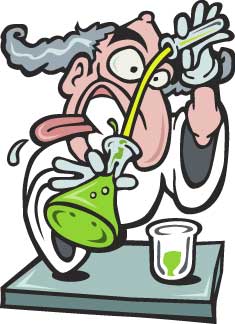blood protein can be used to produce hydrogen
Genetically engineered blood protein can be used to produce hydrogen gas from water
http://www3.imperial.ac.uk/newsandeventspggrp/imperialcollege/newssummary/news_1-12-2006-11-4-23?newsid=3016
Friday 1 December 2006
Scientists have combined two molecules that occur naturally in blood to engineer a molecular complex that uses solar energy to produce hydrogen gas from water, says research published today in the Journal of the American Chemical Society.
This molecular complex can use energy from the sun to create hydrogen gas, providing an alternative to electrolysis, the method typically used to split water into its constituent parts. The breakthrough may pave the way for the development of novel ways of creating hydrogen gas for use as fuel in the future.
Professors Tsuchida and Komatsu from Waseda University, Japan, in collaboration with Imperial College London, synthesised a large molecular complex from albumin, a protein molecule that is found at high levels in blood serum, and porphyrin, a molecule which is used to carry oxygen around the body and gives blood its deep red colour. Porphyrin molecules are normally found combined with metals, and in their natural state in the blood they have an iron atom at their centre. The scientists modified the porphyrin molecule to swap the iron for a zinc atom in the middle, which completely changed the chemistry and characteristics of the molecule.
This modified porphyrin molecule was then combined with albumin; with the albumin molecule itself being modified by genetic engineering to enhance the efficiency of the process. The resulting molecular complex was proven to be sensitive to light, and can capture light energy in a way that allows hydrogen gas to be produced from water molecules.
Dr Stephen Curry, a structural biologist from Imperial College London's Division of Cell and Molecular Biology who participated in the research explains: "This work has shown that it is possible to manipulate molecules and proteins that occur naturally in the human body by changing one small detail of their make-up, such as the type of metal at the heart of a porphyrin molecule, as we did in this study.
"It's very exciting to prove that we can use these biological structures as a conduit to harness solar energy to produce hydrogen gas from water. In the long term, these synthetic molecules may provide a more environmentally friendly way of producing hydrogen gas, which can be used as a 'green' fuel."
For further information please contact:
Laura Gallagher
Imperial College London Press Office
Tel: +44 (0)20 759 46702
Mob: +44 (0)7803 886248
Email: l.gallagher@imperial.ac.uk
Notes to Editors:
1. "Photosensitised reduction of water to hydrogen using human serum albumin complexed with zinc protoporphyrin IX", Journal of the American Chemical Society
Teruyuki Komatsu (1, 2), Rong-Min Wang (1, 3), Patricia A Zunszain (4), Stephen Curry (4), Eishun Tsuchida (1).
(1) Advanced Research Institute for Science and Engineering, Waseda University, 3-4-1 Okubo, Shinjuku-ku, Tokyo 169-8555, Japan
(2) Japan Science and Technology Agency, 4-1-8 Honcho, Kawaguchi-shi, Saitama 332-0012, Japan
(3) Gansu Key Laboratory of Polymer Materials, Northwest Normal University, Lanzhou 730070, China
(4) Biophysics Section, Division of Cell and Molecular Biology, Faculty of Natural Sciences, Imperial College London, South Kensington Campus, London SW7 2AZ, UK
Published online at http://pubs.acs.org/journals/jacsat/
2. Consistently rated in the top three UK university institutions, Imperial College London is a world leading science-based university whose reputation for excellence in teaching and research attracts students (11,500) and staff (6,000) of the highest international quality. Innovative research at the College explores the interface between science, medicine, engineering and management and delivers practical solutions that enhance the quality of life and the environment - underpinned by a dynamic enterprise culture.
Website: www.imperial.ac.uk


0 Comments:
Post a Comment
<< Home